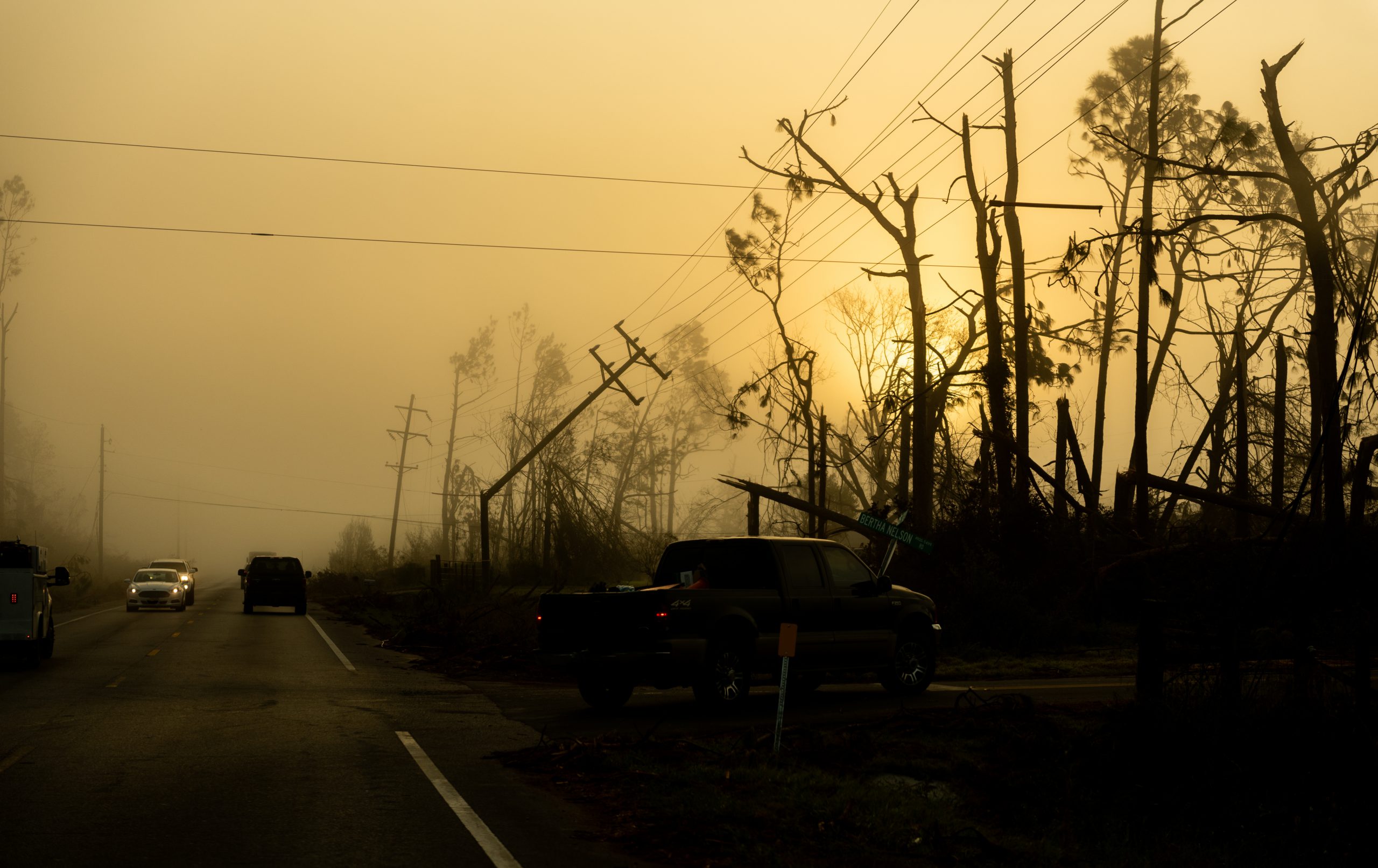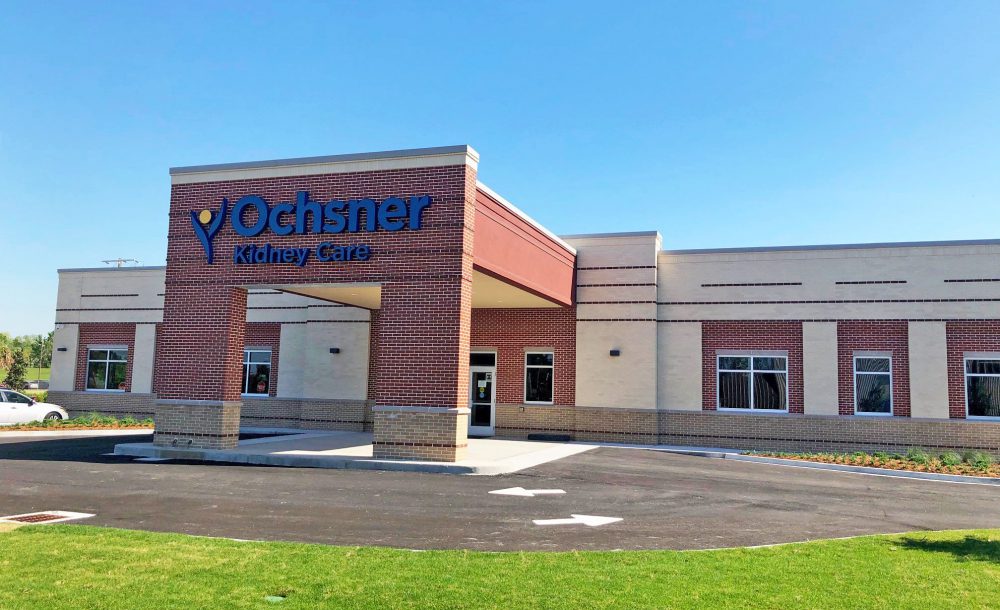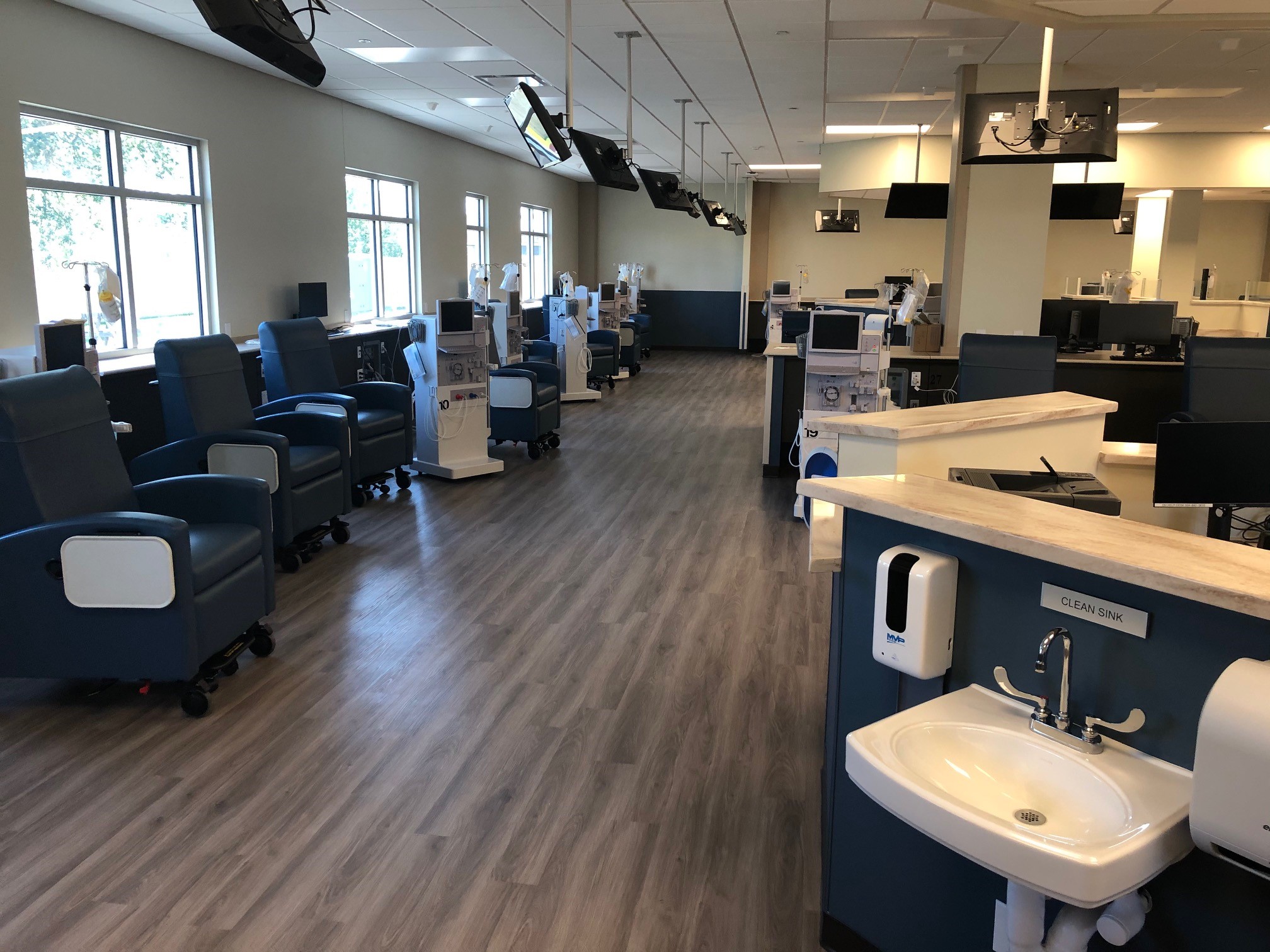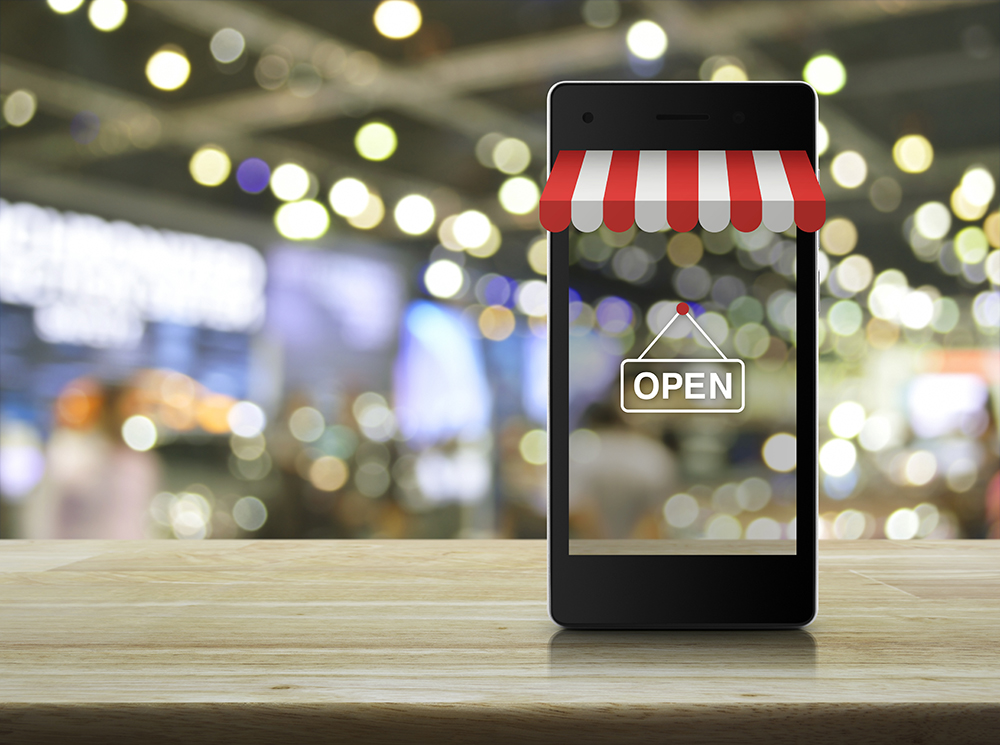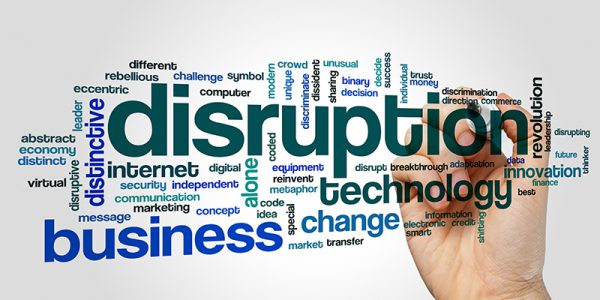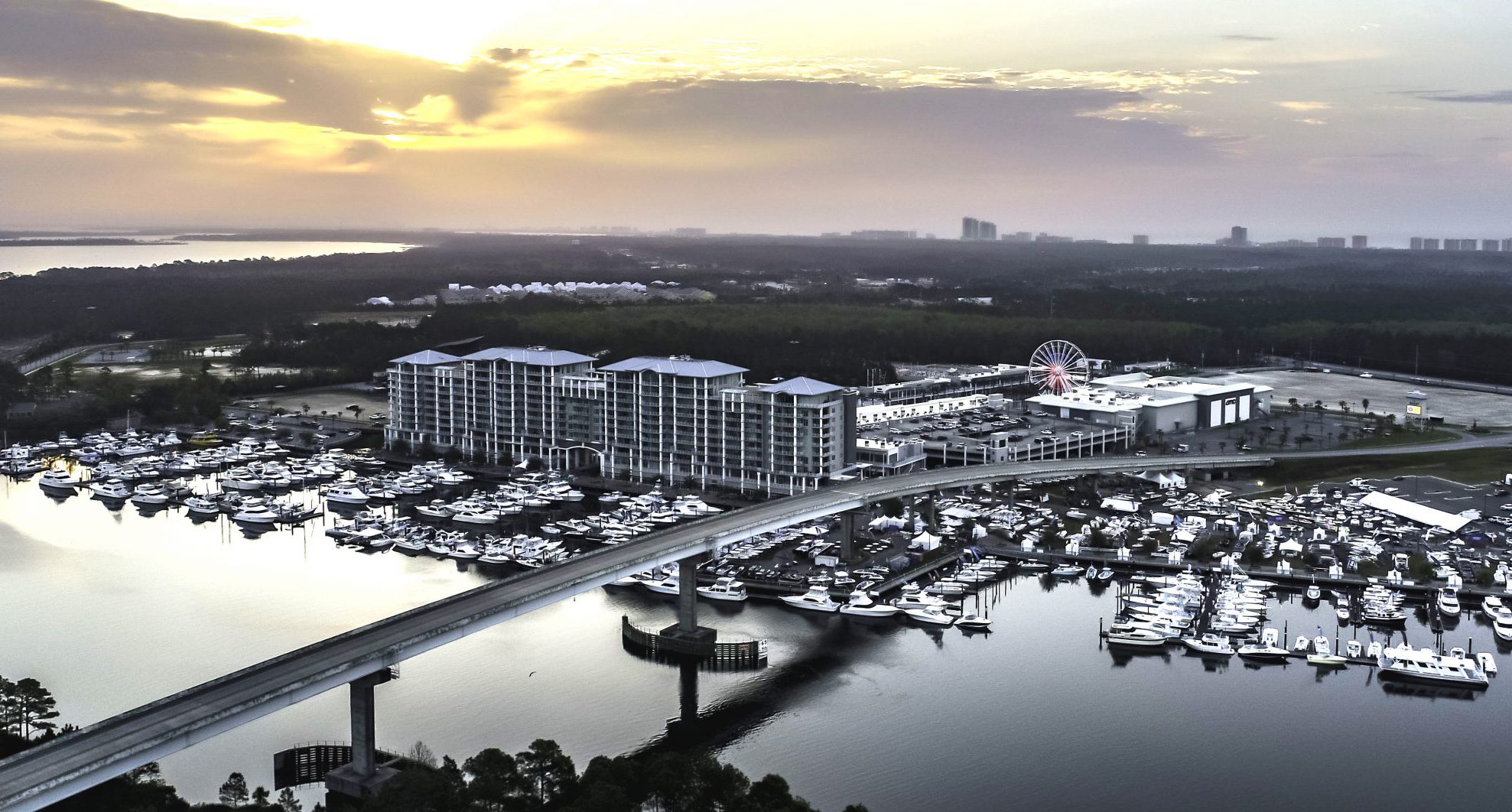Stirling Properties Names Jared Lauderdale as Vice President Controller
Stirling Properties announces that Jared Lauderdale has been promoted to Vice President Controller.
Jared previously held the position of Controller – Property Accounting, responsible for all tax matters in the company’s internally-owned portfolio. While most of his duties will remain the same, his role is also transitioning to being more involved in the business’s property operating and management accounting side.
Over the last few years, Jared has developed and executed new policies and processes to increase coordination and efficiencies throughout Stirling Properties’ accounting department. He has also implemented several new software programs to help the company perform to the best of its abilities.
Most recently, he has been instrumental in guiding Stirling Properties through the numerous federal tax changes happening across the real estate industry, as well as employee tax credits. Also, during the COVID-19 crisis, Jared was influential in helping the company wade through the confusing and fast-changing guidelines of SBA loans and submitting multiple applications for a much-needed PPP loan.
In addition to his job roles, Jared serves on Stirling Properties’ Leadership Committee, helping to create and maintain company culture and improve internal structure between executive leaders and the team. He also volunteers for the company’s Golf and Stewardship Committees.
“We are incredibly proud of Jared for his remarkable growth and leadership within our company. He has excelled in his role and become an invaluable part of our team over the last few years. No one deserves this recognition more than him,” said Marty Mayer, President & CEO of Stirling Properties.
Stirling Properties Develops New Ochsner Kidney Care Clinics Across GNO Area
Through a joint venture of Ochsner Health and National Renal Care (NRC), Stirling Properties is developing four Ochsner Kidney Care clinics across the greater New Orleans area. The clinics are new-to-market for Southeast Louisiana and expand healthcare service offerings for Ochsner Health and its patients. The facilities vary in size from 6,000-11,000 square feet, providing comprehensive, coordinated kidney care and dialysis services.
The first location, Ochsner Kidney Care – Jefferson Highway, is now open to Ochsner patients. Located at 320 Maine Street, the stand-alone facility is a ground-up development and occupies 10,898 square feet of space adjacent to Ochsner Rehabilitation Hospital. This is the first joint venture of its kind in the region.
Three additional clinics are under construction and are expected to open between June and December of 2021:
- Ochsner Kidney Care – Algiers (4001 General De Gaulle Dr., New Orleans)
- Ochsner Kidney Care – Marrero (1201-1219 Barataria Blvd., Marrero)
- Ochsner Kidney Care – Metairie (4300 W. Esplanade Ave., Metairie)
Stirling Properties is serving as the developer on the projects as part of the company’s further expansion of healthcare real estate services. “Stirling Properties is proud and thankful to continue our partnership with Ochsner Health System. Our extensive commercial background and translatable skillset allow us to bring value to our healthcare clients and projects. As the demand for new medical services increases, so are our service lines to meet those local needs,” said Townsend Underhill, President of Development for Stirling Properties.
RED is serving as the architect on the projects. MAPP is the General Contractor, and Duplantis Design Group is the Civil Engineer.
Ochsner and NRC formed Ochsner Kidney Care, which will deliver a holistic approach as part of a new standard of care for people living with kidney disease. The new Ochsner Kidney Care centers, under the direction of the Ochsner Nephrology team, will provide comprehensive kidney care and long-term disease management for improved quality of life.
Stirling Properties and Ochsner Health System have previously worked together on the newly constructed $100+ million Ochsner Medical Complex – High Grove development in Baton Rouge, Ochsner Rehabilitation Hospital in Jefferson, the state-of-the-art Emergency Department and Imaging Center in LaPlace, Louisiana, and Ochsner Northshore Medical Complex (former Louisiana Heart Hospital) in Lacombe, St. Tammany Cancer Center in Covington, and countless other projects across Lousiana.
History Will Tell
I want to share an intriguing quote I heard recently: “History is nothing more than a record of disruptions.” When you think about it, the sentiment is entirely accurate. If it weren’t disruptive to the logic or actions, it wouldn’t be worth remembering, learning from or memorializing. Disruption is difficult, stressful and, well, disruptive. But boiled down, disruption is progress. We can’t advance as a society without changing our mindset, which leads to behavioral change, then systemic change.
We are living in a simultaneously historic and dichotomous time. In the throes of a global pandemic, we had nowhere to go and nothing to do. But despite that, change occurred more rapidly than ever before. How we react to that change can and will determine our future.
Some people have opted to sit back, wait it out, expecting things will eventually return to normal. They view the situation as temporary. To others, this is an opportunity of a lifetime, a chance to hyper-focus on our actions, reactions and interactions with each other and our surroundings. It’s become a chance to re-think flaws in the system—whether physical or social—and push for progress. Those are the trendsetters and change-makers.
Growing up a child of the 80s (who could be classified as both a Jock and Nerd), I had two people who significantly inspired my youthful ambitions: The Boz and The Woz.
The Boz (Brian Bosworth) was the most formidable and rebellious college athlete of the decade. Middle linebacker for the notoriously rough Oklahoma Sooners, he was an All-American first-round draft choice who thumbed his nose at authority. He rocked a faux-hawk and earring and was known for simply crushing anyone who came near him. When he was suspended from college football for steroid use, the media noticed, and reports of drug use and other poor behavior by college athletes were brought to light. Ultimately, his descent from exalted hero to reviled cheater started a wave of mass investigations into college sports that altered public opinion and were the precursor to many rules in place today.
The Woz (Steve Wozniak) used his brain rather than brawn to create the first Apple Computer. Sometimes referred to as “the other Steve,” Wozniak was the co-founder of Apple along with Steve Jobs, and was the actual innovator who created the first products that led to the smartphones we are all tethered to today. Woz was seen as a true pioneer, the obscure reference that techies worship, the guy so cool that he is a question that is an answer on Jeopardy.
A few years back, I had the opportunity to meet Steve Wozniak when he delivered the keynote address at a conference I attended. While waiting in line to greet him, I thought, “What do I say to him? He is The Innovator, The Original Disruptor.” My fawning fanboy questions ended up something like, “Where did the idea and inspiration come from to create something so ingenious? How did you have the foresight to change the way people thought about technology? With technology that was only accessible to the largest and richest of big businesses to solve the most technical problems, how did you know the real power was to give everyone access?”
In reality, the question was more like, “So, how did all this happen?” But he’s The Woz; he knew what I meant. His response, some of which he repeated in his speech, floored me. He said, “I didn’t invent anything. I’m an engineer, not an inventor. All I did was take other people’s ideas and existing products and piece them together. I didn’t have the foresight to see a market for the product. I made the first one for myself, then we gave the plan to our computer club. I had no clue anyone other than our small group would ever want or have use for it. Steve Jobs was the one who realized it could be more than that.” The first Apple computer was clunky, lacked a monitor and was just a compilation of parts designed to serve other purposes. The Apple II was the model that most remember, designed explicitly for consumer sales and backed with the marketing savvy of Steve Jobs. These led to the products that changed the world.
Where am I going with all this? In the commercial real estate industry, we, too, are at an inflection point. No new technology has come out of this pandemic relative to our industry. Still, the acceleration of its use in an industry that has long been behind the curve for adaptation is astounding. Much like Wozniak assembling a few parts that changed the world, companies are focused on taking individual software platforms and merging them to create functional integrated solutions. They are using tech to create more efficient systems to run our properties and reduce carbon footprint. Others are utilizing tech to create more energy-efficient features, building materials, work from anywhere models and supply chains. Retailers used tech seemingly overnight to pivot their entire delivery systems to meet consumer demand.
Likewise, social changes can be likened to the Brian Bosworth story. Our society has sluggishly dragged forward in recent years with a complacent attitude toward issues like racism, gender inequality and environmental concerns. The Boz wasn’t the only athlete that broke the rules in the 80s. We, in general, turned a blind eye to the poor behavior of many athletes, celebrities and politicians because we wanted to exemplify the ideal and not rock the boat. In turn, the incidents that caught the world’s attention over the last year have thrown open the door for true meaningful change.
Was The Boz a bad guy? No. Was The Woz the ultimate genius? No. Their images over that decade do, however, represent the massive social and technological change that led to disruption, which in turn became history.
It has been echoed since COVID hit that there will be winners and losers in its wake. Which category we fall into depends on how we adapt to the issues brought to light during this time. Those that resist change or wait it out on the sidelines, in some way fail. Those that adapt to technology, embrace social change and recognize environmental issues will prosper. Just as we smugly look back on history at those who accepted appalling acts and unthinkable practices by today’s standards, we too will be judged by our children, grandchildren and great-grandchildren.
Look at your business (both personally and professionally) and how you can adapt to be part of a tech-savvy, socially conscious and environmentally responsible future. These issues will be the biggest challenges that our industry and society will face going forward. People, products, properties and processes that confront these issues head-on will be the disruptors and change-makers. They are our future and the winners. Those who just wait it out or go back to how it was are not. Simply put, embrace disruption, or risk becoming history.
The Wharf Reaches Record-Breaking Occupancy on Alabama Gulf Coast
The Wharf at Orange Beach, a popular shopping, dining and entertainment venue on the Alabama Gulf Coast, has reached a record-breaking total occupancy of 98% in 2021 — up from 93% in May 2020.
On the cusp of a completely full venue with only four unoccupied spaces remaining on The Wharf property, the growth has gained much interest from businesses in a range of sectors including restaurants, real estate, entertainment and retail. New tenants that have recently joined The Wharf family include Local Life OBA, Cool Shots Selfie Museum, HUK Performance Fishing Apparel, Southern Athletica, Poppy’s Boutique, Maho Shades, MA Beauty Lounge, Gulf Coast Athletics, Compass Media, the Coastal Alabama Business Chamber and The Wharf Welcome Center, The Spice & Tea Exchange, Murder Point Oysters, The Coastal Leaders Property Group, Coco LOUIE, Joanna A Boutique, Claremont Property Co., Wise Living Real Estate and more on the way that have yet to open. Nearly all are owned by area residents, making The Wharf one of the highest concentrations on the Gulf Coast of locally-owned businesses.
“As The Wharf enters its 15th year, we’re excited to welcome new establishments that will contribute to our continued success,” said Kristen Hammack, management team leader at The Wharf. “We are always looking for ways to better serve and meet the needs of both visitors and locals, and each of these new businesses brings something unique to our offerings. We pride ourselves in being a safe, family friendly venue where you can experience everything from getting married and purchasing a home to renown fishing tournaments, creative culinary options, unique shopping, energetic concerts and more — a place where ‘life’ happens.”
Tom Thumb also recently acquired and broke ground on 3.94 acres of land located at the intersection of Canal Road and Wharf Parkway East for the development of a convenience store and gas pumps. And just behind it, a 127,000 sq. ft. storage facility is currently under construction. The Wharf partnered with Jeff Barnes, broker with Stirling Properties, who is serving as the commercial leasing agent for the property and responsible for securing each of these new tenants.
“We are thrilled to work with The Wharf and welcome new businesses to Orange Beach. Despite the numerous struggles over the last year, the significance of this record-breaking occupancy for The Wharf truly demonstrates the resiliency of the community and the tenacity of locally-owned businesses, as well as the tremendous efforts of the entire team at The Wharf,” said Jeff Barnes, CCIM, senior investment advisor for Stirling Properties.
“The positive momentum is fostering new opportunities for the undeveloped parcels of The Wharf, like the new Tom Thumb and fast-serve establishments and self-storage facility. Our market dynamics and growth are very encouraging, and we are poised for continued success. We look forward to welcoming even more great tenants to The Wharf soon.”
Just last month, Shades Sunglasses and Casual Apparel, with 10 locations in four states across the Southeast, confirmed their highest-ever, single-day record in sales across all stores at its Wharf location. Shades owners, Joe and Mary Jernigan, have also recently opened HUK Performance Fishing Apparel and Coco LOUIE at The Wharf.
“Our sales during the car show a few weekends ago were higher than any Black Friday, Christmas, Memorial Day or other major-shopping holiday that we have seen,” said Joe Jernigan. “Because of the expected growth at The Wharf, we decided to open up two additional stores this year, and both businesses have already exceeded projected business model expectations. Shades at The Wharf has surpassed all other locations in sales and is on track for its best year ever since its inception in 2004 — up 30% from 2019.”
With this growth, The Wharf has made various infrastructure and general property updates along with a substantial upgrade to the nightly light show that now features state-of-the-art lasers named the SPECTRA Laser Light Experience. The spectacle is viewed by more than 115,000 visitors each year.
The Wharf Amphitheater, which was nominated for the 2019 Academy of Country Music Awards Outdoor Venue of the Year, has also received recent upgrades and will be welcoming back the C Spire Summer Concert Series this year with its first socially distant event kicking off on April 25 featuring NEEDTOBREATHE. Other top-charting industry artists are slated to perform in 2021 including the popular Luke Bryan, Jon Pardi, Brantley Gilbert, Brooks & Dunn and more.
Along with concerts, The Wharf is excited to safely welcome back annual events such as car shows, festivals, food events and holiday celebrations with more than 50 events slated for the remainder of 2021.
For the latest news and updates on what’s to come at The Wharf, visit alwharf.com, or follow along on Facebook, Instagram and Twitter at @thewharfoba. For commercial real estate information pertaining to The Wharf including executive office suites, traditional office suites, retail space and commercial sites for development, contact Jeff at 251-975-8222 or via email at jbarnes@stirlingprop.com.
About The Wharf
Located in beautiful Orange Beach, Ala., The Wharf is an official entertainment district with hundreds of family friendly events throughout the year. Enjoy shopping, drinks and dining at our 60+ unique stores, bars and restaurants. Stay onsite at the SpringHill Suites by Marriott hotel or Levin’s Bend Condominium, catch a movie at the 15-screen AMC Theatre, experience a trip around one of the Southeast’s largest Ferris wheels, take a train ride down Main Street, grab a game of mini golf, explore all that nature has to offer on a boating excursion or catch a nightly SPECTRA Laser Light Experience show — the options are endless. The 10,000-seat Wharf Amphitheater hosts a variety of well-known entertainers, and The Wharf Marina is home to some of the largest in-water boat shows and saltwater fishing tournaments on the Gulf. For more information or to book a reservation, visit alwharf.com.


